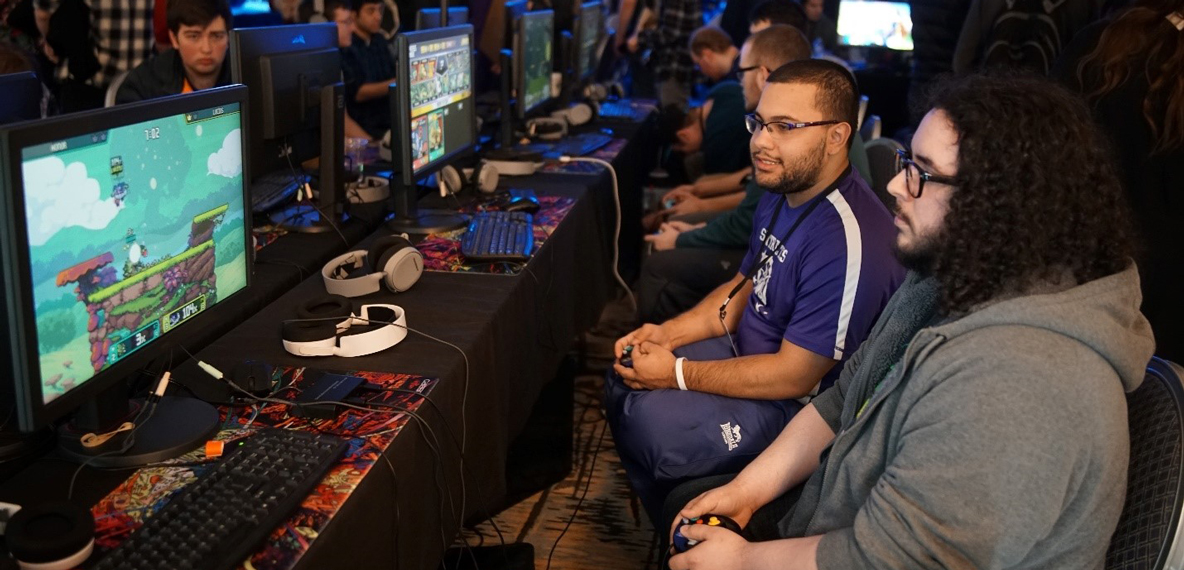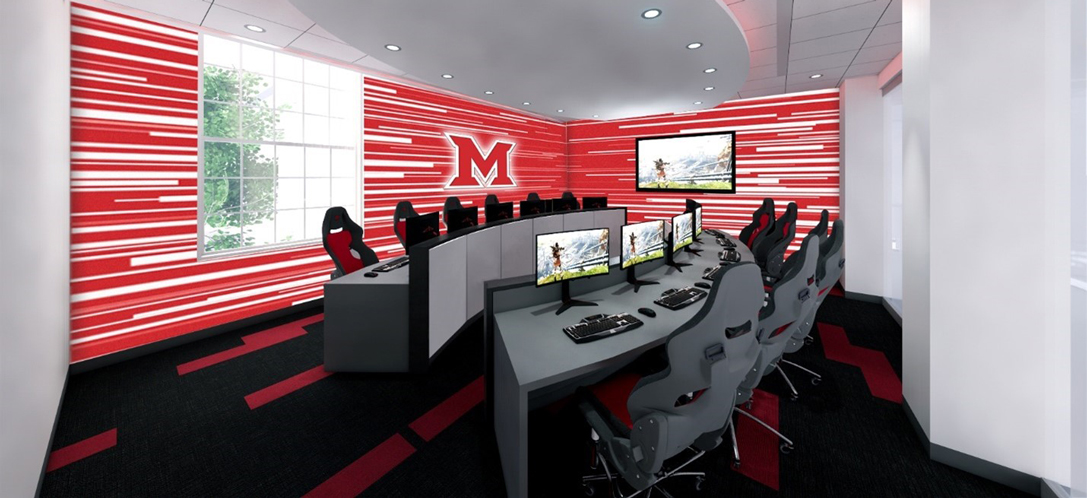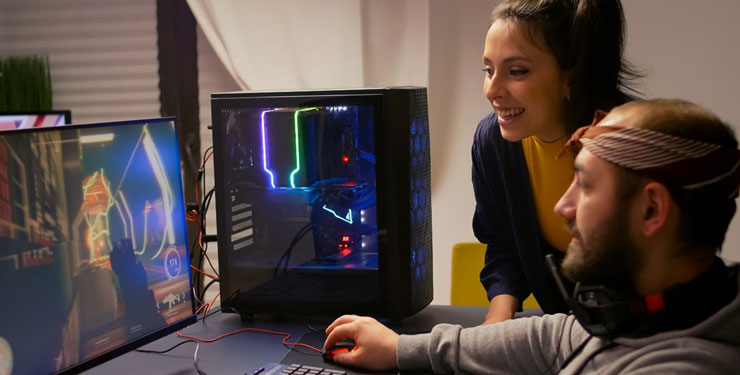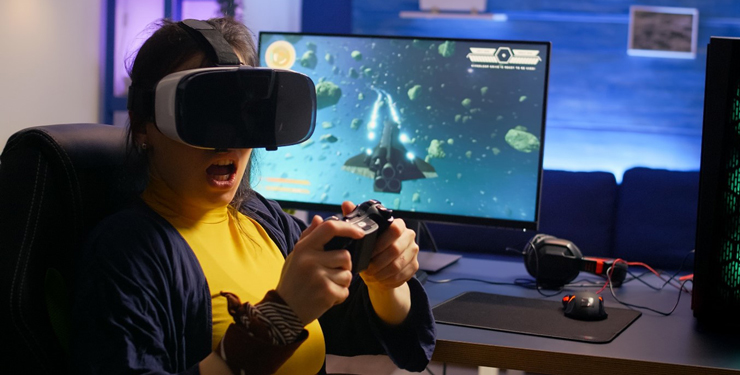
Designing Esports Suites for the Future

Before Jessie was immersed in the world of esports, the idea of playing in the university’s esports and gaming suite was intimidating. Thoughts of a 1,000-person auditorium with watchful eyes and distracting music or strobing lights ran through Jessie’s mind. This sounded like a nightmare compared to the comfort of a dorm room bed. After joining the team, Jessie was pleasantly surprised. Sure, the university had a formal arena, but most of the gaming suite was filled with comfortable spaces, state-of-the-art computers, and like-minded individuals. Jessie’s college experience improved exponentially after joining the esports team and finding a community on campus (as well as a potential career). This was just the beginning.
Esports spaces should foster a healthy gaming environment—but what does that entail? It’s a given that players need adequate technology and a fast internet connection, but esports gaming suites should include more than just the basics. The space must foster #IRL (in real life) interactions that promote better gameplay and the development of interpersonal and life skills, which means the design of gaming suites goes beyond a traditional computer lab.
What Your Esports Gaming Suite Should Include
Depending on the size of the university and its esports program, needs may differ. Still, some core spaces can enhance any gaming space.
First, suites need a formal competition space. This can be a modest room or a full-blown area. Additionally, a team practice room—a space for the varsity team to practice for extended periods or collaborate on ideas—is a great addition. Other optional spaces include an AV-rich casting room for online streaming, a lounge or multi-functional space for breaks from gaming, a general play area for non-team players, and offices for support faculty and staff.

BHDP recently designed a new esports gaming suite for Miami University. Notably, it features a competition room adjacent to the casting room for streaming gameplay.
Establishing Design Drivers
Each space should maximize its qualitative potential—focusing on what makes the environment good for its intended purpose, whether it is extended gameplay, stress reduction, productivity, or performance. Establishing these design drivers upfront allows for a more seamless (and successful) project.
The message is clear: esports in higher education is here to stay. Universities can use esports to meet students where they are and enhance their college experience. Start small and grow the programs as space, funding, and interest increase—and it will likely increase exponentially. Focus on the people and creating spaces and experiences that will last well beyond the student’s college years, and possibly transform their lives for the better.
Be sure to check out part one of this series, Collegiate Esports Programs Are Transforming the Fabric of Higher Education, as well as part two, The Role of Esports in Academic Programming.
Author
Content Type
Date
September 21, 2021
Market
Topic
Esports



